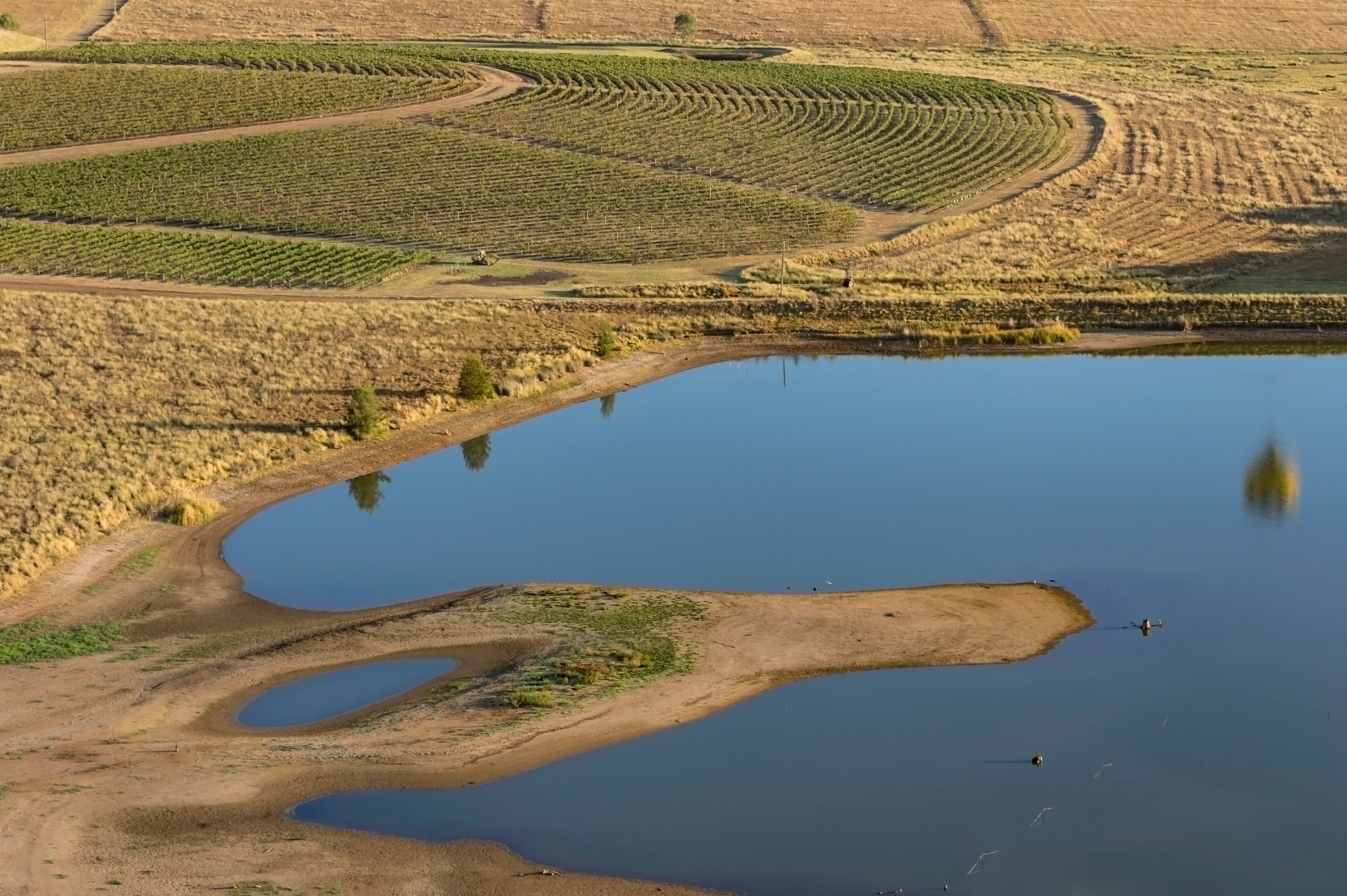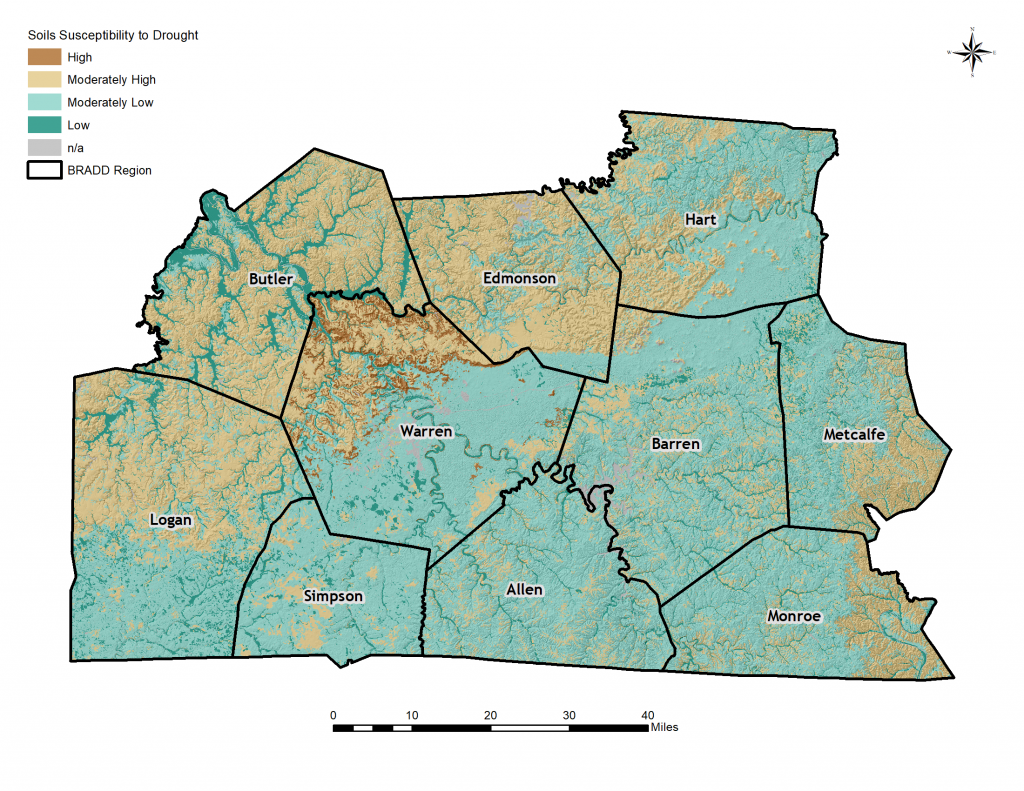
 Drought
Drought
Drought is generally defined as a deficiency in precipitation over an extended period of time which results in a scarcity of water that impacts related activities and groups. Droughts are caused by a lack of precipitation coupled with an increased demand on the water supply. The severity of a drought often depends upon social context. A drought could occur in two different years that are the same in length and dryness, but one drought may be more severe because the society is more vulnerable due to population pressures on the water supply.
Description & Extent
Types of Drought
The Palmer Drought Severity Index is the most widely used measurement of drought severity. The following indicators demonstrate drought severity by comparing the level of recorded precipitation against the average precipitation for a region.
- A meteorological drought is defined by the degree of dryness and the duration of a period without precipitation.
- Agricultural drought ties attributes of meteorological drought with agricultural impacts, often focusing on the amount of precipitation and evapotranspiration, which is the transference of water from the land to the atmosphere via evaporation. The magnitude of this type of drought is often conceptualized as the difference between plant water demand and available soil water. Because of this, the definition of agricultural drought accounts for the susceptibility of crops at the various stages of their development cycle
- Hydrological drought refers to below average water content in surface and subsurface water supply. This type of drought is generally out of phase with meteorological or agricultural drought.
- Socioeconomic drought focuses more on the social context that causes and intensifies drought conditions. This type of drought links meteorological, agricultural, and hydrological drought to supply and demand.
U.S. Drought Monitor
The U.S. Drought Monitor is one way to understand drought. Blending qualitative and quantitative data, it provides a weekly assessment of drought conditions across the U.S. It uses numeric inputs such as the Palmer Drought Severity Index, the Standardized Precipitation Index, and other climatological inputs; the Keech-Byram Drought Index for fire, satellite-based assessments of vegetation health, and various indicators of soil moisture; and hydrologic data, particularly in the West, such as the Surface Water Supply Index and snowpack. It also incorporates empirical evidence from 450 observers across the U.S. including state climatologists, National Weather Service staff, extension agents, and hydrologists.
A description of each category is available below:
|
|
Ranges |
||||||
|
Category |
Description |
Possible Impacts |
|||||
|
D0 |
Abnormally |
Going into drought:
Coming out of drought:
|
-1.0 to -1.9 |
21 to 30 |
21 to 30 |
-0.5 to -0.7 |
21 to 30 |
|
D1 |
Moderate |
|
-2.0 to -2.9 |
11 to 20 |
11 to 20 |
-0.8 to -1.2 |
11 to 20 |
|
D2 |
Severe |
|
-3.0 to -3.9 |
6 to 10 |
6 to 10 |
-1.3 to -1.5 |
6 to 10 |
|
D3 |
Extreme |
|
-4.0 to -4.9 |
3 to 5 |
3 to 5 |
-1.6 to -1.9 |
3 to 5 |
|
D4 |
Exceptional Drought |
|
-5.0 or less |
0 to 2 |
0 to 2 |
-2.0 or less |
0 to 2 |
Source: U.S. Drought Monitor
Location & Past Events
Drought Monitor
The following table displays the number of weeks in D2 (moderate) and D3 (severe) by county. This data is not available at the city level.
BRADD Region Number of Weeks in Drought 2000-2020
| County | D2 | D3 | Total Weeks |
| Allen | 70 | 14 | 84 |
| Barren | 61 | 14 | 75 |
| Butler | 54 | 13 | 61 |
| Edmonson | 57 | 9 | 57 |
| Hart | 53 | 8 | 61 |
| Logan | 66 | 16 | 77 |
| Metcalfe | 53 | 15 | 65 |
| Monroe | 55 | 14 | 69 |
| Simpson | 55 | 13 | 68 |
| Warren | 61 | 11 | 71 |
USDA Drought Declaration
The USDA issues drought declarations for counties if:
- Their governor makes a request in writing to the Secretary of Agriculture
- If the state can show that the counties in question experienced at least a 30% production loss for at least one crops.
Since 2013, the USDA has issued drought disaster declarations for the following BRADD counties:
- Allen County (2016 and 2017, contiguous county)
- Butler County (2019, contiguous county)
- Logan County (2016 and 2017, contiguous county)
- Monroe County (2016 and 2017, contiguous county)
- Simpson County (2016 and 2017, contiguous county)
Probability
Occurrence
The BRADD region, as a whole, experienced — weeks of moderate to severe drought over a 21-year period. The following break down is by county:
- Allen: 336 total weeks in drought/21 years (1,092 weeks) = 31% chance of drought happening in any given week.
- Barren: 336 total weeks in drought/21 years (1,092 weeks) =31% chance of drought. happening in any given week.
- Butler: 301 total weeks in drought/21 years (1,092 weeks) =28% chance of drought happening in a given week.
- Edmonson: 305 total weeks in drought/21 years (1,092 weeks)= 28% chance of drought happening in a given week.
- Hart: 305 total weeks in drought/21 years (1,092 weeks)=28% chance of drought happening in a given week.
- Logan: 350 total weeks in drought/21 years (1,092 weeks)=32% chance of drought happening in a given week
- Metcalfe: 321 total weeks in drought/21 years (1,092 weeks)=29% chance of drought happening in a given week
- Monroe: 330 total weeks in drought/21 years (1,092 weeks)=30% chance of drought happening in a given week
- Simpson: 351 total weeks in drought/21 years (1,092 weeks)=32% chance of drought happening in a given week
- Warren: 336 total weeks in drought/21 years (1,092 weeks)=31% chance of drought happening in a given week
Therefore, each county in the BRADD region demonstrates between a 28-32% chance of experiencing drought in any given week.
Impact
In the BRADD region, the primary impact of drought is on agriculture. Drought is likely to occur on an annual basis; however, such a drought is likely to impact agriculture – not water supply or access. Therefore, the impact of drought in the BRADD region can be understood through agricultural impacts – such as crop insurance loss data.
The region could experience a disruption with water supply depending on the severity and duration of the drought. This would not only affect the residential areas of the community but could also impact the emergency services of the region.
Health related low-flow problems such as cross-connection contamination, diminished sewage flow and increased pollutant concentrations are also of concern to the region.
An action that many people adopt during droughts is conserving water. The result of this action includes less cleaning, personal hygiene, and hand washing, which increases a person’s risk of diseases. The long term affects of drought come from the dry conditions that irritate the bronchial passageways and lungs. During dry conditions that occur in droughts there might also be airborne toxins that irritate a person’s respiratory tract. Water-related activities may also put a person at risk due to waterborne disease. Lastly, a person’s mental health may also be affected by droughts due to financial predicaments. These people rely on a normal rainfall for economic survival needs, such as farmers.
Not only do droughts have a public health affect but also energy used daily is jeopardized. Water is used to create electricity as well as heating and cooling purposes in a home or business.
Populations at Risk
Children:
Children are considered an “at-risk individual” when a drought is issued. Some children may have weak immune systems and during a drought there may be toxins airborne, as well as waterborne, easy for them to catch. Due to children playing often outside this could be very risky for them to be in such a dry condition, whether the temperature is warm or not, especially if they have asthma.
Elderly:
As an elderly person in a hospital or health care facility, a drought would be a concern. The medical centers use water to care for their patients and sterilize the supplies used daily. During a drought, elderly people are considered “at-risk individuals.”
Low income:
In some cases, lower income families will directly be affected through financial-related stress. Once their business is affected by the drought, in return their earnings and income will see results due to the drought. This predicament causes stress and worry eventually distressing a person’s mental health.
The manmade environment, including built structures and infrastructures are vulnerable to droughts. The region may experience structural damage to the foundations of buildings, increased susceptibility of trees to wind damage, deceased availability of water for municipal use, reduction in rural population, and unemployment from drought related declines in productions.
The natural environment will highly be affected by a drought. The region will see damages to animal species and the plant community which will have both short and long term affects. Short term affects include: lack of feed and drinking water, greater mortality due to increased conflict with agricultural producers, disease, increased stress to endangered species, loss of trees, and increased number and severity of fires. The long term affects include: reduction and degradation of fish and wildlife habitat and loss of biodiversity. The region will experience a loss of fish and other aquatic organisms due to decreased levels or flows. <br /.
There will also be number hydrological effects. These include: lower levels in reservoirs, lakes, and ponds, reduced stream flow, loss of wetlands, increased ground water depletion, land subsidence, reduced recharge, and water quality degraded.
An overall increase in temperatures in Kentucky (0.6° F) have led to higher evaporation rates. Combined with summer rain deficits, there is a chance for more intense droughts.
Potential impacts include:
- Loss of vegetation and crops
- Higher need for irrigation
- Cattle health risks
- Limited access to water especially with growing population
- Impact on economy: agriculture, industry, tourism, and natural resource management
- Potential shifts in growing season and vegetation regimes
Agriculture and livestock producers will be affected both long term and short term. The short term affects include: reduced yield and crop loss, reduction of foundation stock, insect infestation, reduced milk production, plant disease, wildlife damage to crops, increased irrigation to crops and feed cost, high livestock mortality rates, decreased stock weights, and high livestock mortality rates. Long term affects include: wind and water erosion of exposed topsoil, loss of organic material, and reduced productivity of pastureland.
In addition to the agriculture community, there will also be a loss of timber production, forest fires, direct loss of trees, and increased susceptibility to wind damage.
Crop Loss
This dashboard displays the indemnity amount, which represents the dollar amount of yield loss due to drought. The dashboard also shows the number of acres that were impacted by drought.
Source: USDA Risk Management Agency
Drought Vulnerability in the BRADD Region
Soil Susceptibility
Soil’s susceptibility to drought varies due to a myriad of factors. The map below depicts vulnerability to drought based on soil type from a moisture retention and availability perspective. For example a shallow fragipan limits the depth of the soil making it more vulnerable to moisture loss. Grey areas indicate that no soil data was available due to lakes, heavily urbanized areas, or strip mining. Susceptibility to Drought Scores were established using the criteria of infiltration, water movement, and water supply for the soils defined in the NRCS Soil Surveys that encompass the state.

Public Water System Vulnerability
The Commonwealth of Kentucky’s 2018 Hazard Mitigation Plan created a public water system vulnerability scoring system for Kentucky. Water systems may be more vulnerable to drought due to percent leakage loss, water source, and more. This map clips the state’s public water system vulnerability rating to the BRADD Region.
The map indicates that the BRADD Region’s public water systems as a whole exhibit a low vulnerability to drought.
Hazard Vulnerability Summary Analysis
The BRADD Region has a near uniform risk of —- drought happening annually. However, factors, such as soil composition, acres of agricultural land, and water loss, make certain communities within the region more vulnerable to drought. Click the county names below to review vulnerability analysis by county. Overall vulnerability is defined using the classification definitions from FEMA.
- Allen County’s public water system demonstrates --- vulnerability to drought.
- The soil susceptibility map indicates that large swaths of Allen County’s soil experience low to moderately low susceptibility to drought.
- Barren County’s public water system demonstrates low vulnerability to drought.
- The soil susceptibility map indicates that large swaths of Barren County’s soil experience low to moderately high susceptibility to drought.
- Butler County’s public water system demonstrates low vulnerability to drought.
- The soil susceptibility map indicates that large swaths of Butler County’s soil experience moderately high susceptibility to drought.
- Edmonson County’s public water system demonstrates low vulnerability to drought.
- The soil susceptibility map indicates that large swaths of Butler County’s soil experience moderately high susceptibility to drought.
- Hart County’s public water system demonstrates low to moderate vulnerability to drought.
- The soil susceptibility map indicates that large swaths of Hart County’s soil experience moderately high susceptibility to drought.
- Logan County’s public water system demonstrates low vulnerability to drought.
- The soil susceptibility map indicates that the northern portion of Logan County’s soil experiences moderately high susceptibility to drought.
- Metcalfe County’s public water system demonstrates low vulnerability to drought.
- The soil susceptibility map indicates that the majority of Metcalfe County’s soil experiences low susceptibility to drought. However, the eastern side of the county does have a moderately high susceptibility to drought.
- Metcalfe County’s public water system demonstrates low vulnerability to drought.
- The soil susceptibility map indicates that the majority of Metcalfe County’s soil experiences low susceptibility to drought. However, the eastern side of the county does have a moderately high susceptibility to drought.
- Simpson County’s public water system demonstrates low to high vulnerability to drought.
- The soil susceptibility map indicates that the majority of Simpson County’s soil experiences low susceptibility to drought. However, pockets of soil in the western portion of the county do have a moderately high susceptibility to drought.
- Warren County’s public water system demonstrates low vulnerability to drought.
- The soil susceptibility map indicates that the majority of Warren County’s soil experiences low susceptibility to drought. However, the northwestern portion of the county does have a high susceptibility to drought.